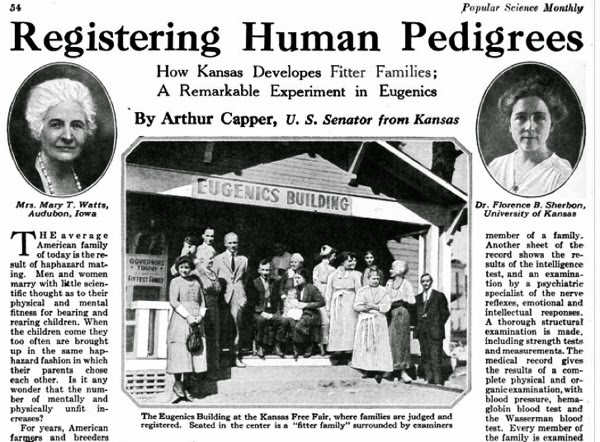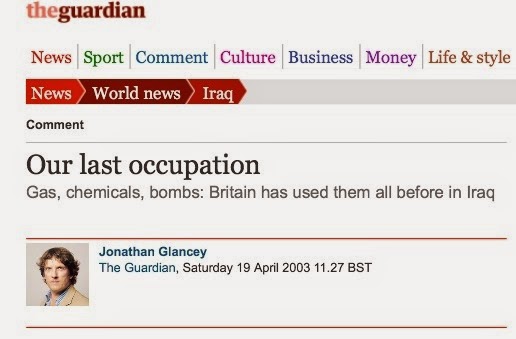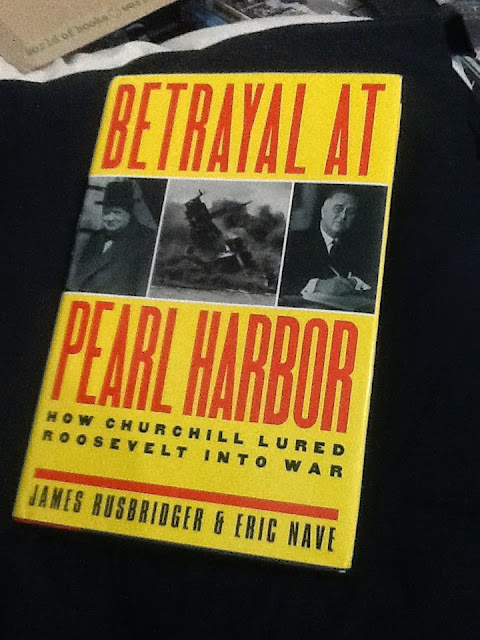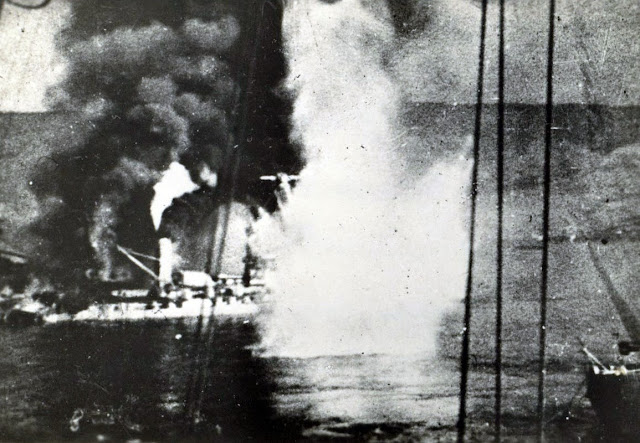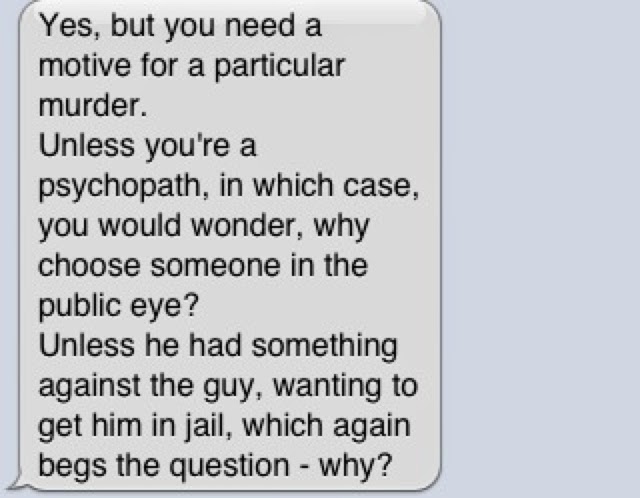By Sir Martin Gilbert CBE
Abstract: When he was Home Secretary (February 1910-October 1911) Churchill was in favor of the confinement, segregation, and sterilization of a class of persons contemporarily described as the "feeble minded." The most significant letter Churchill wrote in support of eugenics was not, however, deliberately left out of the official biography by Randolph Churchill for reasons of embarrassment, but simply through oversight. -Ted Hutchinson
The author (www.martingilbert.com) is an honorary member and trustee of The Churchill Centre, is the official biographer of Sir Winston Churchill and the author of more than eighty books, on the two World Wars, the Holocaust and 20th century history as well as Churchill.
Randolph Churchill has been accused of deliberately omitting from his narrative volumes and from the companion volumes-because he was ashamed of it-a letter from Churchill to Asquith, written in December 1910, stating that "The unnatural and increasingly rapid growth of the Feeble-Minded and Insane classes, coupled as it is with a steady restriction among all the thrifty, energetic and superior stocks, constitutes a national and race danger which it is impossible to exaggerate."
I can state without fear of contradiction that Randolph never saw this letter, of which there was no copy in the Churchill papers. Here is the story of that letter, and its context.
"The improvement of the British breed is my aim in life," Winston Churchill wrote to his cousin Ivor Guest on 19 January 1899, shortly after his twenty-fifth birthday. Churchill's view was reinforced by his experiences as a young British officer serving, and fighting, in Arab and Muslim lands, and in South Africa. Like most of his contemporaries, family and friends, he regarded races as different, racial characteristics as signs of the maturity of a society, and racial purity as endangered not only by other races but by mental weaknesses within a race. As a young politician in Britain entering Parliament in 1901, Churchill saw what were then known as the "feeble-minded" and the "insane" as a threat to the prosperity, vigour and virility of British society.
The phrase "feeble-minded" was to be defined as part of the Mental Deficiency Act 1913, of which Churchill had been one of the early drafters. The Act defined four grades of "Mental Defective" who could be confined for life, whose symptoms had to be present "from birth or from an early age." "Idiots" were defined as people "so deeply defective in mind as to be unable to guard against common physical dangers." "Imbeciles" were not idiots, but were "incapable of managing themselves or their affairs, or, in the case of children, of being taught to do so." The "feeble-minded" were neither idiots nor imbeciles, but, if adults, their condition was "so pronounced that they require care, supervision, and control for their own protection or the protection of others." If children of school age, their condition was "so pronounced that they by reason of such defectiveness appear to be personally incapable of receiving proper benefit from instruction in ordinary schools." "Moral defectives" were people who, from an early age, displayed "some permanent mental defect coupled with strong vicious or criminal propensities on which punishment had little or no effect."[1]
In 1904, as Churchill was crossing from the Conservative to the Liberal benches, A.J. Balfour's Conservative government set up a Royal Commission "On the Care and Control of the Feeble-Minded." When the commission reported in 1908 to the Liberal Government-which had come into office at the end of 1905, and of which Churchill was a Cabinet Minister-it recommended compulsory detention of the mentally "inadequate," as well as sterilisation of the "unfit," so that it would be impossible to have children and thus perpetuate what were then seen as inherited characteristics. Until that time only the criminally insane, whom the courts had judged to be a danger to themselves and others, were sent to mental asylums. Detention of the "feeble-minded"-for life-was considered by the Royal Commission to be vital to the health of the wider society.
Such detention, as well as sterilisation, were at that time the two main "cures" to "feeble-mindeness." They were put forward by the eugenicists, those who believed in "the possibility of improving the qualities of the human species or a human population by such means as discouraging reproduction by persons having genetic defects or presumed to have inheritable undesirable traits (negative eugenics) or encouraging reproduction by persons presumed to have inheritable desirable traits (positive eugenics)."[2]
In introducing its recommendations in 1908, the Royal Commission On the Care and Control of the Feeble-Minded-one of whose eight members was the chairman of the eugenics-influenced National Association for Promoting the Welfare of the Feeble-Minded-expressed its concern about "the numbers of mentally defective persons" in Britain "whose training is neglected, over whom no sufficient control is exercised and whose wayward and irresponsible lives are productive of crime and misery...and of much continuous expenditure wasteful to the community." The Royal Commisison suggested that permanent institutional care was the means to establish control over the feeble-minded. It also advocated the establishment of industrial "colonies" with schools.[3]
Churchill shared the Royal Commission's fears and supported its recommendations. The improvement of the health and well-being of the British race was a central aspect of his political and social outlook. As President of the Board of Trade, while advancing important measures of social reform, he had seen widespread poverty and demoralisation throughout Britain. In 1910, on becoming Home Secretary, he read a booklet by Dr. H.C. Sharp, The sterilisation of Degenerates. Dr Sharp was a member of the Indiana Reformatory. In 1907, while the Royal Commission was taking evidence in Britain, the State of Indiana had passed a Eugenics Law making sterilisation mandatory for those individuals in State custody who were judged mentally unfit. They were also refused the right to marry.[4] Other States passed similar laws. Between 1907 and 1981, more than 65,000 individuals were forcibly sterilised in the United States.[5]
Using a thick blue pencil, Churchill marked in Sharp's pamphlet the sections about the Indiana legislation and the operations that had been carried out on both men and women to sterilise them. In September 1910, Churchill wrote to his Home Office officials asking them to investigate putting into practice the "Indiana Law"-dominated by sterilisation, and the prevention of the marriage of the "Feeble-Minded." Churchill wrote: "I am drawn to this subject in spite of many Parliamentary misgivings....Of course it is bound to come some day." Despite the misgivings, "It must be examined." He wanted to know "what is the best surgical operation?" and what new legal powers would be needed to carry out sterilisation.
Churchill was answered by his Chief Medical Adviser of Prisons, Dr. Horatio Donkin, who described the Indiana arguments for eugenics as "The outcome of an arrogation of scientific knowledge by those who had no claim to it....It is a monument of ignorance and hopeless mental confusion."[6]
In October 1910 a deputation to the Government called for the implementation of the Royal Commission's recommendations without delay. Churchill, in his reply, recalled the fact that there were at least 120,000 "feeble-minded" persons "at large in our midst" who deserved "all that could be done for them by a Christian and scientific civilization now that they are in the world," but who should, if possible, be "segregated under proper conditions so that their curse died with them and was not transmitted to future generations."
Churchill had not given up his belief in sterilisation as well as segregation. On studying the case of Alfred Oxtoby, who had been convicted in June 1910 of bestiality and of indecently assaulting a twelve-year-old girl-and who had been described by the local police in the East Riding of Yorkshire as mentally inadequate and "over-sexed"-Churchill wrote to his advisers: "This seems to be a case where a complete cure might be at once effected by sterilisation." Churchill went on to ask: "Can this ever be done by consent?" In reply, Donkin wrote that sterilisation would not in fact remove Oxtoby's sexual drive, and that he was too insane to give informed consent. Oxtoby was sent to Broadmoor criminal lunacy asylum. Churchill asked that his case be kept under review at the Home Office in the hope that sterilisation would become possible in the near future.[7]
With Dr. Sharp's pamphlet and the Oxtoby case much in mind, Churchill decided to take the initiative with regard to the implementation of the Royal Commission's recommendations. He wrote to the Prime Minister, H.H. Asquith, in December 1910, about the "multiplication of the unfit" that constituted "a very terrible danger to the race." Until the public accepted the need for sterilisation, Churchill argued, the "feeble-minded" would have to be kept in custodial care, segregated both from the world and the opposite sex.
In his letter, Churchill told Asquith: "The unnatural and increasingly rapid growth of the Feeble-Minded and Insane classes, coupled as it is with a steady restriction among all the thrifty, energetic and superior stocks, constitutes a national and race danger which it is impossible to exaggerate. I am convinced that the multiplication of the Feeble-Minded, which is proceeding now at an artificial rate, unchecked by any of the old restraints of nature, and actually fostered by civilised conditions, is a terrible danger to the race." Concerned by the high cost of forced segregation, Churchill preferred compulsory sterilisation to confinement, describing sterilisation as a "simple surgical operation so the inferior could be permitted freely in the world without causing much inconvenience to others."
Churchill's letter to Asquith showed how much he regarded British racial health as a serious and an urgent issue. As he wrote to the Prime Minister: ‘I feel that the source from which the stream of madness is fed should be cut off and sealed up before another year has passed.'[8].
To reinforce his sense of urgency, Churchill circulated to his Cabinet colleagues the text of a lecture by Dr A.F. Treadgold, one of the expert advisers to the Royal Commission. It was entitled "The Feeble-Minded-A Social Danger." Written in 1909, the lecture gave, in the words of Churchill's covering note, "a concise, and, I am afraid not exaggerated statement of the serious problems to be faced." Churchill added: "The Government is pledged to legislation, and a Bill is being drafted to carry out the recommendations of the Royal Commission."[9]
In February 1911, Churchill spoke in the House of Commons about the need to introduce compulsory labour camps for "mental defectives." As for "tramps and wastrels," he said, "there ought to be proper Labour Colonies where they could be sent for considerable periods and made to realize their duty to the State."[10] Convicted criminals would be sent to these labour colonies if they were judged "feeble-minded" on medical grounds. It was estimated that some 20,000 convicted criminals would be included in this plan. To his Home Office advisers, with whom he was then drafting what would later become the Mental Deficiency Bill, Churchill proposed that anyone who was convicted of any second criminal offence could, on the direction of the Home Secretary, be officially declared criminally "feeble-minded," and made to undergo a medical enquiry. If the enquiry endorsed the declaration of "feeble-mindedness," the person could then be detained in a labour colony for as long as was considered a suitable period.
No legislation was introduced along these lines while Churchill was at the Home Office. In October 1911 he was appointed First Lord of the Admiralty, in charge of the Royal Navy, with new concerns and new responsibilities. On 17 May 1912, while he was at the Admiralty, a Private Members' Bill was introduced in the House of Commons, entitled the "Feeble-Minded Control Bill." This called for the implementation of the Royal Commission's conclusions. Hundreds of petitions were sent to Parliament in support of legislation. The Committee to further the Bill was headed by the two Anglican primates, the Archbishops of Canterbury and York. H.G. Wells was a supporter of the Bill. G.K. Chesterton led a public campaign against the Bill. Dean Inge, the Dean of St Paul's, complained that eugenics was so logical it was only opposed by "irrationalist prophets like Mr. Chesterton." In his public lectures and published articles W.G. Chesterton ridiculed what he called "the Feeble-Minded Bill.'"
The Feeble-Minded Control Bill rejected compulsory sterilisation, but made it a punishable misdemeanour to marry or attempt to marry a mental defective, or to solemnise, procure or connive at such a marriage. It provided for registration and segregation. And it gave the Home Secretary the power to commit any person who fell outside the definition of feeble-mindedness but whose circumstances appeared to warrant his inclusion.
On its first reading, the Bill had only thirty-eight opponents. But the Liberal newspapers opposed it vigorously, and Josiah Wedgwood, a Liberal Member of Parliament, denounced it as a "monstrous violation" of individual rights. Roman Catholics leaders denounced it as "contrary to Christian morals and elementary human rights." When Wedgwood spoke in the House of Commons against it, he called it "legislation for the sake of a scientific creed which in ten years may be discredited."
The Private Members Bill was withdrawn, but the Liberal Government, conscious of the strength of public feeling in favour of a measure based on the Royal Commission's conclusions, decided to introduce its own "Mental Deficiency Bill," for the compulsory detention of the "feeble-minded." This Government Bill was introduced to Parliament on 10 June 1912. In urging the passage of the new Bill, Churchill's successor as Home Secretary, Reginald McKenna, said: "I commend it to the House in the confident assurance that if it is passed into law we shall be taking a great step towards removing one of the worst evils in our time."
In his summing up, Josiah Wedgwood said: "I urge that the Government should, if this legislation goes through, see that all the homes in which defectives are looked after are homes run by the Government, and not for private profit, where the inspection is of the best and where the treatment is of the very highest character, and that the earliest possible term should be set to this licensing of private homes where private profit is likely to be the main cause of the existence of the home, and where, to a large extent, employment will be carried on under extremely undesirable conditions by people who are absolutely unable to protect themselves."[11]
Between 24 and 30 July 1912, a month after the Second Reading of the Mental Deficiency Bill in Parliament, the first international Eugenics Conference was held in London, and was attended by four hundred delegates. Churchill was a Vice-President of the Congress, and Alexander Graham Bell, the inventor of the telephone, was one of its directors, as was Charles Eliot, a former President of Harvard, and the Regius Professor of Medicine at Oxford, Sir William Osler. The Canadian-born Osler, who had been created a baronet the previous year, was one of the world's most prominent practitioners of clinical medicine.
The Congress opened with a reception and a banquet that was addressed by the former Prime Minister, A.J. Balfour. A programme of entertainment was provided by a committee headed by the Duchess of Marlborough (the American heiress Consuelo Vanderbilt, who was married to Churchill's cousin the Ninth Duke of Marlborough). Churchill did not attend.
The Congress on Eugenics led to renewed public pressure for Britain to adopt eugenics laws. In October 1912, Churchill discussed the proposed laws with Wilfrid Scawen Blunt, who wrote in his diary: "Winston is also a strong eugenist. He told us he had himself drafted the Bill which is to give power of shutting up people of weak intellect and so prevent their breeding. He thought it might be arranged to sterilise them. It was possible by the use of Roentgen rays, both for men and women, though for women some operation might also be necessary. He thought that if shut up with no prospect of release without it many would ask to be sterilised as a condition of having their liberty restored. He went on to say that the mentally deficient were as much more prolific than those normally constituted as eight to five. Without something of the sort the race must decay. It was rapidly decaying, but could be stopped by such means."[12]
The views of the eugenists were much influenced by the American psychologist Henry H. Goddard, who asserted that "feeble-mindedness" was a hereditary trait, almost certainly caused by a single recessive gene. His view was widely spread in 1912 with the publication of his book The Kallikat Family: A Study in the Heredity of Feeble-Mindedness, about those in the general population who carried the recessive trait despite outward appearances of normality. Goddard, the creator of the term "moron," was the director of the Vineland Training School-originally the Vineland Training School for Backward and Feeble-minded Children-in New Jersey. In his book, Goddard recommended segregating the "feeble minded" in institutions like his own, where they would be taught various forms of menial labour.[13]
The Mental Deficiency Bill passed its third reading in the House of Commons in 1913, with only three votes being cast against it. The new law rejected sterilisation, which Churchill had earlier advocated, in favour of confinement. On 16 November 1914, in describing the working of the Act during the previous year, Reginald McKenna told the House of Commons: "Institutions and homes provided by religious and philanthropic associations, and by individuals, have come forward in considerable numbers, and the Board has certified or approved of thirty-one of them, making provision for 2,533 cases. In addition to these there are the nine hospitals and institutions formerly registered under the Idiots Act which have become certified institutions or houses under the Mental Deficiency Act, and continue to provide accommodation for many hundreds of defectives. Nine local authorities have entered into contracts with one or other of these institutions for the reception of defectives from their area; five of these contracts cover a number exceeding eighty, and in the remaining four the numbers to be received are not specified."[14]
The concept of hereditary mental illness that could be halted by sterilisation remained widespread for many years. In 1927, in the United States, in the case of Buck versus Bell, the distinguished Justice Oliver Wendell Holmes, then in his twenty-fifth year on the Supreme Court, closed the 8-1 majority opinion upholding the sterilisation of Carrie Buck-who along with her mother and daughter had been labelled "feeble-minded"-with the six words: "Three generations of imbeciles are enough."
In 1928 the Canadian Province of Alberta passed legislation-the Sexual Sterilisation Act of Alberta-that enabled the provincial government to perform involuntary sterilisations on individuals classified as "mentally deficient." In order to implement the 1928 act, a four-person Alberta Eugenics Board was created to approve sterilisation procedures. In 1972, the Sexual sterilisation Act was repealed, and the Eugenics Board dismantled. During the forty-three years of the Eugenics Board, 2832 sterilisation procedures were performed.[15]
Britain never legislated for sterilisation or carried it out. Detention in institutions was the chosen path since the Mental Deficiency Act 1913. That act continued in force for almost half a century. The 1959 Mental Health Act, introduced by Harold Macmillan's Conservative Government, was described in its preamble as "An Act to repeal the Lunacy and Mental Treatment Acts 1890 to 1930, and the Mental Deficiency Acts, 1913 to 1938, and to make fresh provision with respect to the treatment and care of mentally disordered persons and with respect to their property and affairs; and for purposes connected with the matters aforesaid."[16]
A year later the Mental Health (Scotland) Act
repealed the Lunacy (Scotland) Acts 1857 to 1913, and the Mental Deficiency (Scotland) Acts, 1913 and to 1940 "to make fresh provision with respect to the reception, care and treatment of persons suffering, or appearing to be suffering, from mental disorder, and with respect to their property and affairs; and for purposes connected with the matters aforesaid."[17]
Detention, not sterilisation, had been the chosen legislative path in Britain between 1913 and 1959. But with the advances in medical science and medical ethics, fewer and fewer categories of "persons suffering... rom mental disorder" were considered needy of detention. Causes such as food and nutritional deficiency, poverty and deprivation, abuse and neglect, were identified as among the reasons-and early diagnosis, medication, therapy, community care and family support systems as the methods of treatment-of what was considered, at the time of Churchill's support for eugenics before the First World War, as hereditary "feeble-mindedness" with no cure.
[1] The text of the Medical Deficiency Act 1913 was published in the British Medical Journal (BMJ) in its issue of 16 November 1912, pages 1397-9.
[2] ‘Eugenics': Random House Dictionary: Dictionary.com Unabridged (v 1.1). Random House, Inc. 21 March 2009.
[3] Report of the Royal Commission on the Care and Control of the Feeble-Minded, 1908. His Majesty's Stationery Office, Command Paper 4202 of 1908.
[4] sterilisations were halted in Indiana in 1909 by Governor Thomas R. Marshall, but it was not until 1921 that the Indiana Supreme Court ruled that the 1907 law was unconstitutional, as it was a denial of due process under the Fourteenth Amendment. A 1927 law provided for appeals in the courts. In all, approximately 2,500 people were sterilised while in State custody. Governor Otis R. Bowen approved repeal of all sterilisation laws in 1974. By 1977 the related restrictive marriage laws were repealed.
[5] Australia, Belgium, Brazil, Canada, Denmark, Estonia, Finland, France, Iceland, Norway and Sweden and Switzerland have at different times used sterilisation for the mentally ill. The number of sterilisations in Sweden was 62,000. The most notorious sterilisation legislation was promulgated in Nazi Germany in July 1933, under which more than 150,000 Germans, including many children and babies, judged ‘mentally unfit' were sterilised, and an equal number killed by gas or lethal injection between 1933 and 1940.
[8] Asquith papers, MS 12, folios 224-8.
[10] Hansard, Parliamentary Debates, 10 February 1911.
[11] Hansard, Parliamentary Debates, 10 June 1912.
[12] W. S. Blunt, My Diaries:
1888-1914, 2 Volumes. New York: Alfred A. Knopf, 1921.
[13] Henry H. Goddard, The Kallikat Family: A Study in the Heredity of Feeble-Mindedness. New York, The Macmillan Company, 1912.
[14] Hansard, Parliamentary Debates, 16 November 1914.
[15] The Alberta Sexual Sterilisation Act was disproportionately applied to those in socially vulnerable positions, including women, children, the unemployed, domestic help, rural citizens, the unmarried, people in institutions, Roman and Greek Catholics, and people of Ukrainian, Native and Métis ethnicity.
[16] Royal Assent, 29 July 1959.
[17] Royal Assent, 29 July 1960.
No one, least of all the British, should be surprised at the state of anarchy in Iraq. We have been here before. We know the territory, its long and miasmic history, the all-but-impossible diplomatic balance to be struck between the cultures and ambitions of Arabs, Kurds, Shia and Sunni, of Assyrians, Turks, Americans, French, Russians and of our own desire to keep an economic and strategic presence there.
Laid waste, a chaotic post-invasion Iraq may now well be policed by old and new imperial masters promising liberty, democracy and unwanted exiled leaders, in return for oil, trade and submission. Only the last of these promises is certain. The peoples of Iraq, even those who have cheered passing troops, have every reason to mistrust foreign invaders. They have been lied to far too often, bombed and slaughtered promiscuously.
Iraq is the product of a lying empire. The British carved it duplicitously from ancient history, thwarted Arab hopes, Ottoman loss, the dunes of Mesopotamia and the mountains of Kurdistan at the end of the first world war. Unsurprisingly, anarchy and insurrection were there from the start.
The British responded with gas attacks by the army in the south, bombing by the fledgling RAF in both north and south. When Iraqi tribes stood up for themselves, we unleashed the flying dogs of war to "police" them. Terror bombing, night bombing, heavy bombers, delayed action bombs (particularly lethal against children) were all developed during raids on mud, stone and reed villages during Britain's League of Nations' mandate. The mandate ended in 1932; the semi-colonial monarchy in 1958. But during the period of direct British rule, Iraq proved a useful testing ground for newly forged weapons of both limited and mass destruction, as well as new techniques for controlling imperial outposts and vassal states.
The RAF was first ordered to Iraq to quell Arab and Kurdish and Arab uprisings, to protect recently discovered oil reserves, to guard Jewish settlers in Palestine and to keep Turkey at bay. Some mission, yet it had already proved itself an effective imperial police force in both Afghanistan and Somaliland (today's Somalia) in 1919-20. British and US forces have been back regularly to bomb these hubs of recalcitrance ever since.
Winston Churchill, secretary of state for war and air, estimated that without the RAF, somewhere between 25,000 British and 80,000 Indian troops would be needed to control Iraq. Reliance on the airforce promised to cut these numbers to just 4,000 and 10,000. Churchill's confidence was soon repaid.
An uprising of more than 100,000 armed tribesmen against the British occupation swept through Iraq in the summer of 1920. In went the RAF. It flew missions totalling 4,008 hours, dropped 97 tons of bombs and fired 183,861 rounds for the loss of nine men killed, seven wounded and 11 aircraft destroyed behind rebel lines. The rebellion was thwarted, with nearly 9,000 Iraqis killed. Even so, concern was expressed in Westminster: the operation had cost more than the entire British-funded Arab rising against the Ottoman Empire in 1917-18.
The RAF was vindicated as British military expenditure in Iraq fell from £23m in 1921 to less than £4m five years later. This was despite the fact that the number of bombing raids increased after 1923 when Squadron Leader Arthur Harris - the future hammer of Hamburg and Dresden, whose statue stands in Fleet Street in London today - took command of 45 Squadron. Adding bomb-racks to Vickers Vernon troop car riers, Harris more or less invented the heavy bomber as well as night "terror" raids. Harris did not use gas himself - though the RAF had employed mustard gas against Bolshevik troops in 1919, while the army had gassed Iraqi rebels in 1920 "with excellent moral effect".
Churchill was particularly keen on chemical weapons, suggesting they be used "against recalcitrant Arabs as an experiment". He dismissed objections as "unreasonable". "I am strongly in favour of using poisoned gas against uncivilised tribes _ [to] spread a lively terror _" In today's terms, "the Arab" needed to be shocked and awed. A good gassing might well do the job.
Conventional raids, however, proved to be an effective deterrent. They brought Sheikh Mahmoud, the most persistent of Kurdish rebels, to heel, at little cost. Writing in 1921, Wing Commander J A Chamier suggested that the best way to demoralise local people was to concentrate bombing on the "most inaccessible village of the most prominent tribe which it is desired to punish. All available aircraft must be collected the attack with bombs and machine guns must be relentless and unremitting and carried on continuously by day and night, on houses, inhabitants, crops and cattle."
"The Arab and Kurd now know", reported Squadron Leader Harris after several such raids, "what real bombing means within 45 minutes a full-sized village can be practically wiped out, and a third of its inhabitants killed or injured, by four or five machines which offer them no real target, no opportunity for glory as warriors, no effective means of escape."
In his memoir of the crushing of the 1920 Iraqi uprising, Lieutenant-General Sir Aylmer L Haldane, quotes his own orders for the punishment of any Iraqi found in possession of weapons "with the utmost severity": "The village where he resides will be destroyed _ pressure will be brought on the inhabitants by cutting off water power the area being cleared of the necessaries of life". He added the warning: "Burning a village properly takes a long time, an hour or more according to size".
Punitive British bombing continued throughout the 1920s. An eyewitness account by Saleh 'Umar al Jabrim describes a raid in February 1923 on a village in southern Iraq, where bedouin were celebrating 12 weddings. After a visit from the RAF, a woman, two boys, a girl and four camels were left dead. There were many wounded. Perhaps to please his British interrogators, Saleh declared: "These casualties are from God and no one is to be blamed."
One RAF officer, Air Commodore Lionel Charlton, resigned in 1924 when he visited a hospital after such a raid and faced armless and legless civilian victims. Others held less generous views of those under their control. "Woe betide any native [working for the RAF] who was caught in the act of thieving any article of clothing that may be hanging out to dry", wrote Aircraftsman 2nd class, H Howe, based at RAF Hunaidi, Baghdad. "It was the practice to take the offending native into the squadron gymnasium. Here he would be placed in the boxing ring, used as a punch bag by members of the boxing team, and after he had received severe punishment, and was in a very sorry condition, he would be expelled for good, minus his job."
At the time of the Arab revolt in Palestine in the late 1930s, Air Commodore Harris, as he then was, declared that "the only thing the Arab understands is the heavy hand, and sooner or later it will have to be applied". As in 1921, so in 2003.
Mers el Kebir Memorial at Toulon, France
In English the text reads "1297 Sailors died for France on the 3rd and 6th of July 1940 at Mers-El-Kabir"
BRITISH ULTIMATUM TO THE FREE FRENCH FLEET
It is impossible for us, your comrades up to now, to allow your fine ships to fall into the power of the German enemy. We are determined to fight on until the end, and if we win, as we think we shall, we shall never forget that France was our Ally, that our interests are the same as hers, and that our common enemy is Germany. Should we conquer we solemnly declare that we shall restore the greatness and territory of France. For this purpose we must make sure that the best ships of the French Navy are not used against us by the common foe. In these circumstances, His Majesty's Government have instructed me to demand that the French Fleet now at Mers el Kebir and Oran shall act in accordance with one of the following alternatives;
(a) Sail with us and continue the fight until victory against the Germans.
(b) Sail with reduced crews under our control to a British port. The reduced crews would be repatriated at the earliest moment.
If either of these courses is adopted by you we will restore your ships to France at the conclusion of the war or pay full compensation if they are damaged meanwhile.
(c) Alternatively if you feel bound to stipulate that your ships should not be used against the Germans lest they break the Armistice, then sail them with us with reduced crews to some French port in the West Indies — Martinique for instance – where they can be demilitarised to our satisfaction, or perhaps be entrusted to the United States and remain safe until the end of the war, the crews being repatriated.
If you refuse these fair offers, I must with profound regret, require you to sink your ships within 6 hours.
Finally, failing the above, I have the orders from His Majesty's Government to use whatever force may be necessary to prevent your ships from falling into German hands.
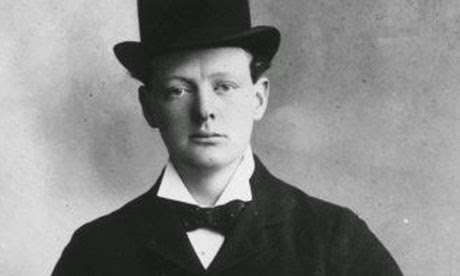

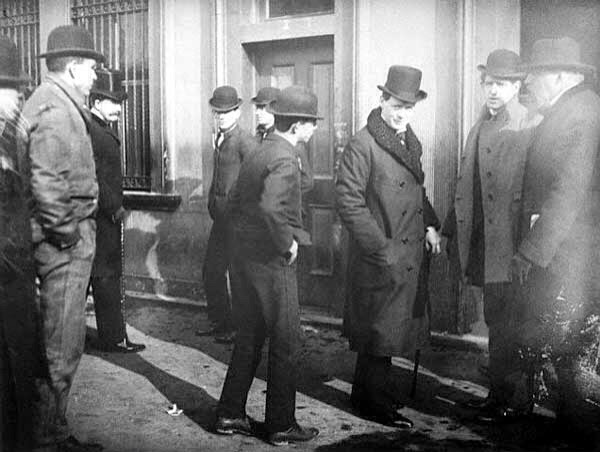
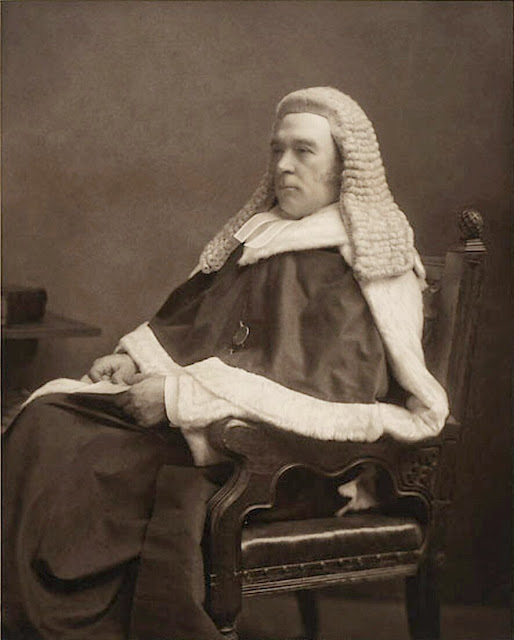
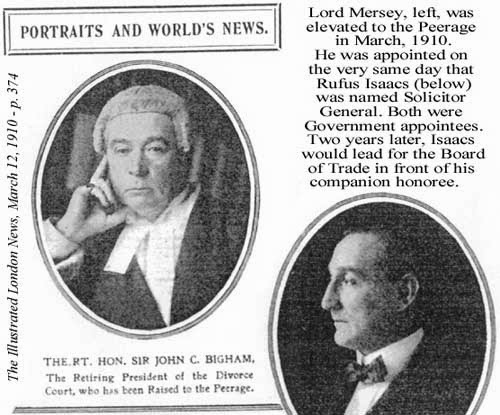

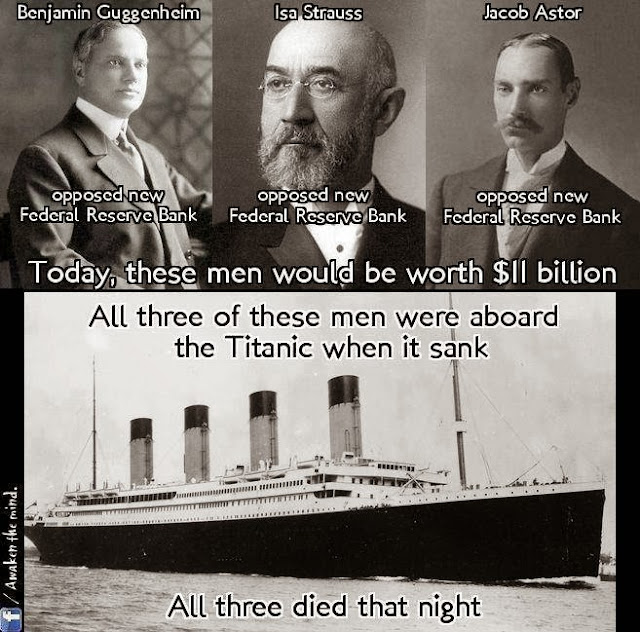
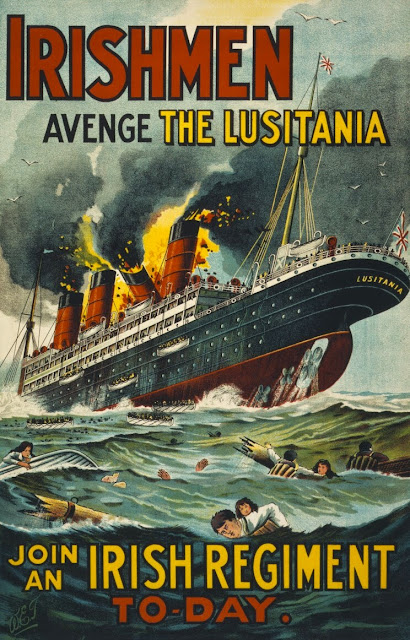
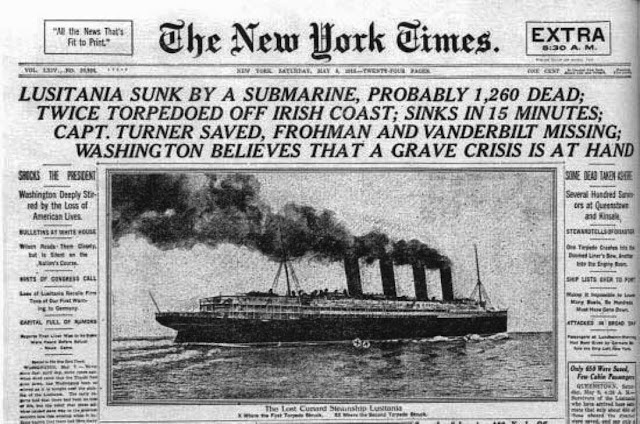
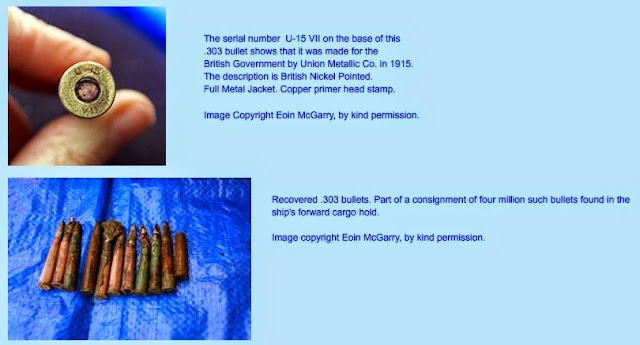
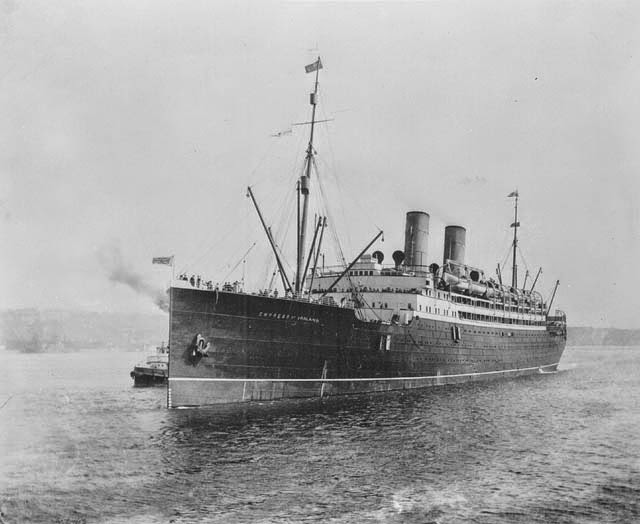
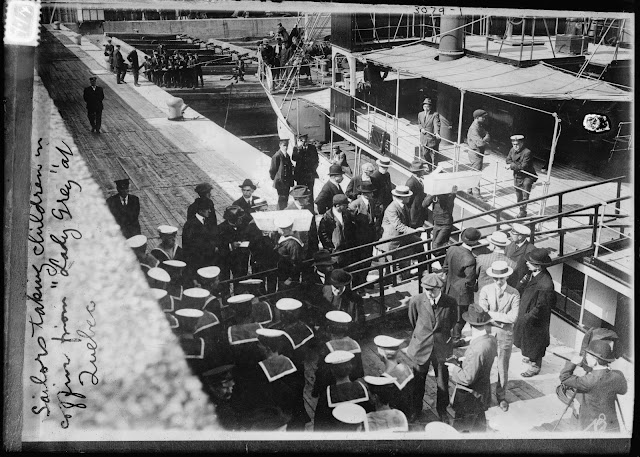
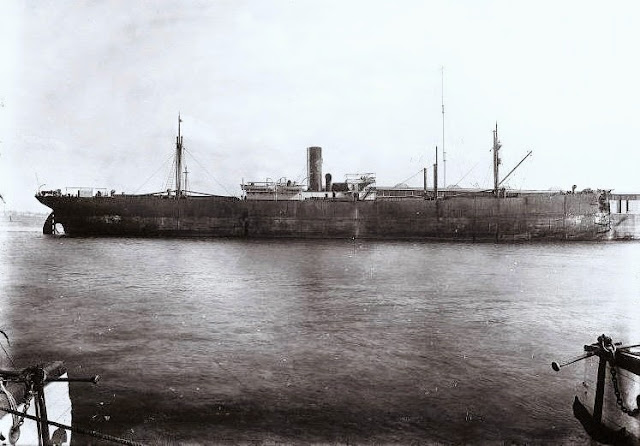

%2C_-_Vanity_fair_nov_19_1887.jpg)

